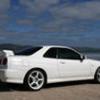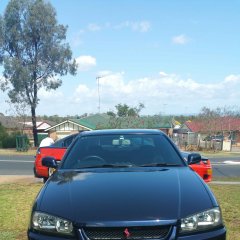Is There Any Differences Between R32,33 And 34 Rb26dett Engines?
Announcements
-
Similar Content
-
Latest Posts
-
Oh, there's also the gearbox crossmember which will probably be different between the small box and the big box, and the wiring loom will probably need to be modified, because the plugs for the switches etc, will probably be different. And I think the speedo on the small box R34s is from somwhere stupid, like the diff, possibly, so you'd need to work out what needs to be done about that (assuming it is different). I think the thing you need to realise is that the front end of that yoke is a large hollow tube with splines on the inside that mates with the splines on the box's output shaft. It is a dedicated thing - not available "aftermarket". They were made to suit that box, by the car's OEM.
-
You need to buy a Saab Matt, ours had a button that turned all the dash lights off. Any decent aftermarket dash has sufficient brightness control and a headlight input for day/night settings. None of which probably helps OP
-
Yeah thanks...i thought it would be alot more i dont know 😄 I saw some videos on converting push/pull and it seems you need to "drill" the hole for slave(master) cylinder and buy some converter kit. On that front yoke clip i did not even know that is a thing and i need to source that(custom shops do not do that?) But anyway thank you for the info
-
Not the headlight. It's the DRL that serves double duty as white and amber. Would be the easiest way to make it happen, if fitting a BCM was in any way an easy thing. Otherwise you'd do it with some relay logic and/or maybe some diodes.
-
Would require a very smart body control module which these cars are about 20 years to old to have
-





Recommended Posts
Create an account or sign in to comment
You need to be a member in order to leave a comment
Create an account
Sign up for a new account in our community. It's easy!
Register a new accountSign in
Already have an account? Sign in here.
Sign In Now